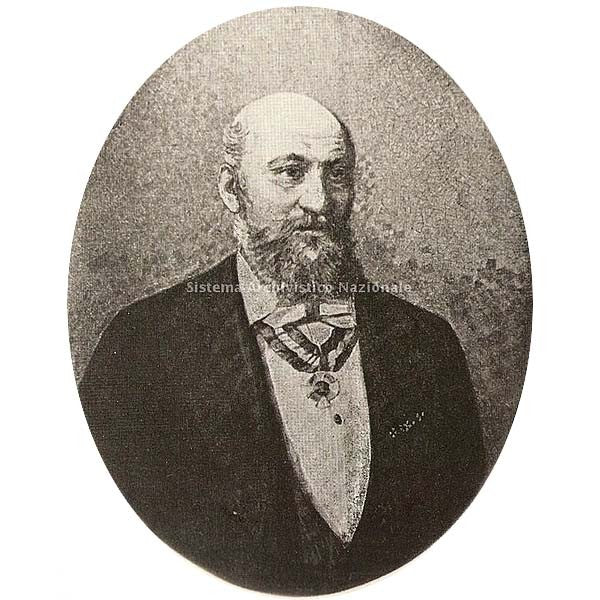Born in Vicenza in 1816, he died in Venice in 1890. In 1859, together with Enrico Podio and Lorenzo Radi he opened a glassware and mosaic boutique called Salviati dott. Antonio fu Bartolomeo. In 1866 he established the firm called Vetreria Salviati & Co. ; in 1898 that firm got totally controlled by the Camerino family.
Salviati was a lawyer who became interested in glass work after participating in restorations being done on the mosaics of Saint Mark's Cathedral in Venice. He opened his first glass business in 1859 with Lorenzo Radi, and this firm produced the mosaic glass for the altar screen for the high altar of Westminster Abbey. In 1876, he left this business to establish a new firm which executed the mosaic decoration of the dome of Aachen Cathedral. The designs of this cathedral were based on the ideas of the Belgian architect Jean-Baptiste de Bethune. The Victorian period saw Salviati turn glass pieces, a former staple of wealth only enjoyed by a few, into ornamental pieces seen by millions throughout the homes and parlors of Italy.
During 1866, Antonio Salviati founded Compagnia Venezia Murano with British diplomat and archaeologist Austen Henry Layard.
Pauly & Co. - Compagnia Venezia Murano has continued to be an important producer of Venetian art glass.
Of particular historical relevance is the mosaic portrait of President Abraham Lincoln, which can be viewed today in the Senate House rooms in the United States, produced by Compagnia Venezia Murano and donated by Antonio Salviati in 1866.
Murano had been a centre of fine glasswork since the Middle Ages (producing the glass that bore its name), but the pieces were lavish and expensive specialty pieces that only the wealthy could afford. Salviati changed the face of the business by becoming the first glass factory owner to employ a large number of skilled workers to mass-produce glass intended for export.
The Victorian period saw Salviati turn glass pieces, a former staple of wealth enjoyed by a few, into ornamental pieces seen by millions throughout the homes and parlors of Italy.
This re-established Murano as a centre for glass manufacture.
Salviati died January 25, 1890, in Venice Italy.
Works in Europe.
Salviati's work spread mainly to England and France, where his work was best associated with the architectural design style of these countries.
His mosaics can be seen in many churches across these countries.
His smaller, mass produced work, stayed relative to Italy being sold as retail.
Bibliography (wikipedia)
• Antonio Salviati e la rinascita ottocentesca del vetro artistico veneziano, Vicenza, Museo civico di Palazzo Chiericati, 27 febbraio-25 aprile 1982, introduzione di Giovanni Mariacher, Vicenza 1982.
• A. Bova, P. Migliaccio, Vetri artistici. Antonio Salviati e la Compagnia Venezia Murano, Venezia 2011.
• G. Roverato, L’industria nel Veneto. Storia economica di un caso regionale, Padova, Esedra, 1996.


Leave a comment
All comments are moderated before being published.
This site is protected by hCaptcha and the hCaptcha Privacy Policy and Terms of Service apply.